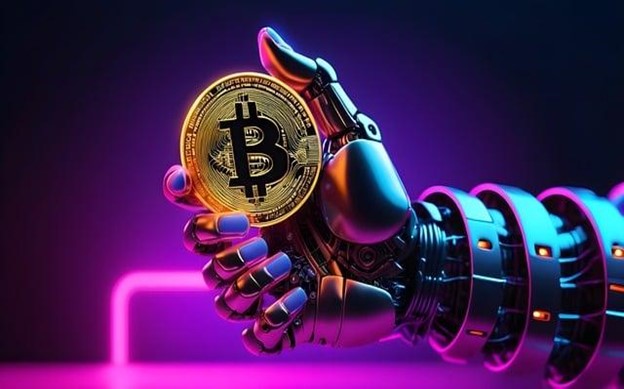Beyond a shadow of a doubt, Bitcoin is the most prominent financial innovator of the 4th Industrial Revolution as can easily be noticed in the Bitcoin price chart and carries the colossal potential for a global economy that grows faster than expected, partly due to increased spending and slowing inflation. Its implications are more potent than ever. The world’s biggest cryptocurrency operates on a decentralized ledger – the blockchain – that eliminates the need for intermediaries or central authorities, guaranteeing protection against fraud and censorship for those who buy Bitcoin with credit card. Bitcoin relies on peer-to-peer networking and cryptography to maintain its integrity.

Since the advent of Ordinals in January 2023, there’s been a revival of activity within the development community, keen to explore new fungible token protocols, scaling solutions, and smart contract implementation. Ordinals have prompted expansion in Bitcoin’s Layer-2 ecosystem, enhancing its functionality without altering its protocol. BIPs (Bitcoin Improvement Proposals) allow the community to evaluate and implement changes, and they typically begin with a formal discussion, with communication often taking place on forums or social media platforms. Post-Ordinals, Bitcoin developments have expanded to include more efforts to strengthen on-chain and off-chain application use cases.
Conjured up by the same mind that created Ordinals, Runes capitalize on Bitcoin’s UTXO mechanism, offering a more efficient way of creating fungible tokens, which minimizes the on-chain footprint. Ordinals and Runes are two rivaling advancements on the Bitcoin network, and the competition between them can drive innovation, improve quality, and influence people to buy NFT. Please continue reading if you’re curious to find out more.
Ordinals Are The Equivalent Of NFTs On The Ethereum Blockchain
One of the most intensely challenged ideas in the cryptocurrency landscape last year, Ordinals facilitate the creation of NFTs on the Bitcoin blockchain; they’re immutable and undergo decentralized verification. The term “ordinal” originates from Casey Rodarmor’s Ordinal Theory, which advances a logical ordering system to assign unique numbers to each Satoshi (the lowest denomination of Bitcoin) based on the order in which they were created on the network. Ordinals aren’t part of the original vision for Bitcoin, meaning they run on separate software, issued on top of Bitcoin.
Ordinals work by inscribing data, such as text, images, audio, and even games, onto Satoshis, which gain non-fungibility as they become unique, indivisible, transferable, and capable of proving their scarcity. Ordinals and Inscriptions are frequently used to create virtual items or assets on the Bitcoin blockchain called artifacts. Casey Rodarmor, a long-time Bitcoinner and programmer artist, prefers “digital artifact” over “Bitcoin NFT” because it’s simple, suggestive, and familiar, having gotten the name inspiration from ChatGPT. Inscriptions are NFTs, strictly speaking, but let’s not forget there’s a broader category of NFTs, and Inscriptions are only a subset.
Ordinals can be bought, sold, and traded like regular NFTs on marketplaces that have their one-of-a-kind collections and call for specific wallet compatibility (Xverse, Leather, Unisat, etc.). It’s worth checking out the Magic Eden marketplace, which stands out for its user-friendly interface and comprehensive support. The platform also offers a Launchpad feature that helps creators mint their collections without any technical know-how.
Runes Create Fungible Tokens With Minimal Impact On Blockchain Size
Runes are similar to pre-existing fungible tokens on the Bitcoin network, the only difference being that they’re designed to be more efficient and immutable. Highly experimental assets, Runes take advantage of the UTXO model, where tokens are managed through transaction outputs. It all comes down to creating a genesis UTXO that includes the details of the Rune’s name, symbol, decimals, and total supply; sending out transactions generates fractionalized, fungible pieces of the original UTXO, now called Runes. Not only do Runes put less pressure on the network, but they also make it work better and help alleviate congestion.
Runes focus on creating fungible tokens, much like ERC-20 tokens on the Ethereum blockchain, and were developed to overcome the shortcomings of BRC-20 tokens, such as limited functionality, network congestion, and centralization concerns, to name a few. Essentially, Runes function as a specialized layer on top of the Bitcoin network, making it possible for anyone to produce and manage fungible tokens that are interchangeable and indistinguishable from one another. To explore this new asset class, use an offline Bitcoin wallet to protect you from threats.
Some collections, like Runestone, take a one-time snapshot of holders, while others focus on long-time holders, who “etched” the tokens prior to the launch of the protocol. Interestingly, some BRC-20 projects, like PUPS and WZARD, plan to migrate to the Runes standard, enabling users to capitalize on the new features and improvements. Runes can be transferred just like any other token without the need for UTXO splitting. They’re perfect for creating digital assets like loyalty points, in-game currencies, or stablecoins within the Bitcoin ecosystem. If Casey Rodarmor is a visionary, then the future of Runes is bright.
Wrapping It Up
Ordinals and Runes are groundbreaking blockchain protocols that extend Bitcoin’s capabilities beyond mere transactions by enabling the creation, management, and transfer of digital assets on the network. While Ordinals open up new possibilities for unique digital artifacts, Runes improve the network’s efficiency and scalability by supplying a solid framework for developing fungible tokens. As they continue to evolve and gain traction, their impact on the cryptocurrency sphere will be profound, ushering in a new era of innovation. The urgency to break new ground has never been greater.
With its unmatched potential to foster new opportunities and lay the foundation for inventive solutions across multiple industries, Bitcoin stands at the forefront of technological advancement. The working functionality of its blockchain is complex, but you can straightforwardly understand it by seeking help…many websites these days team up with experts to assist people in navigating the complexities of the technology. Problems concerning decentralization, scalability, and security are holding Bitcoin back, and these concerns must be addressed before it can go to the next stage of growth.
Since its creation, Bitcoin has not only survived but thrived. Ordinals and Runes are the latest innovations on the network. What comes next?
image credits: https://pixabay.com/illustrations/ai-generated-robot-bitcoin-8602781/

 Hot Features
Hot Features













